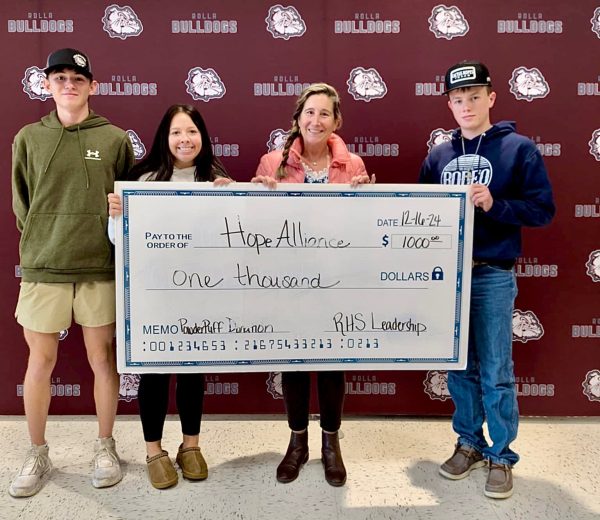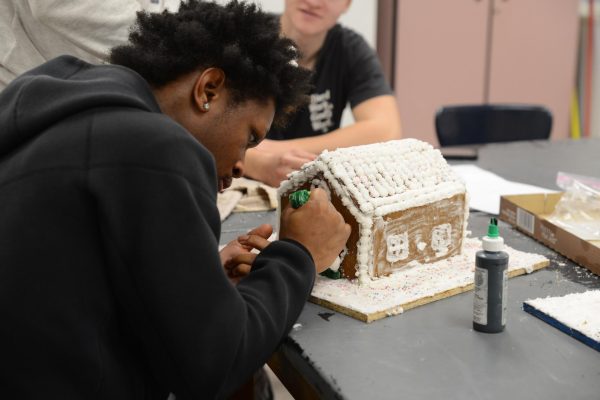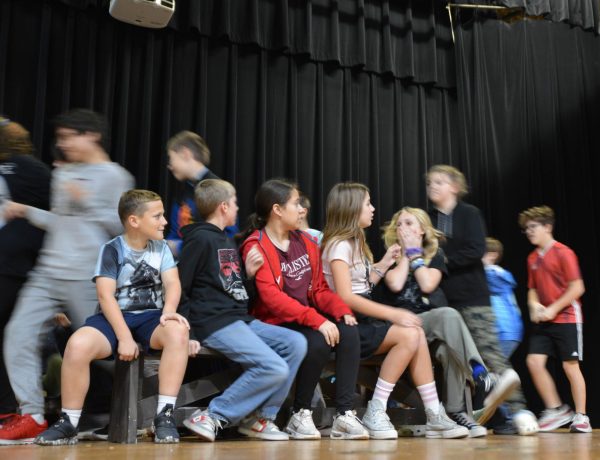Partial government shutdown affects community, uncertainty creates tension
The longest partial government shutdown in American history lasted from December 22, 2018 through January 25, 2019. Because of this, hundreds of thousands of federal employees across several departments were unable to work, resulting in over a month of no paychecks for them. However, not all of the government was shutdown. One employee of the National Parks Service spoke on the subject, but asked to remain anonymous.
“That means that part of the budget has been passed and when you look at what has and hasn’t been funded, some of that is the parks service. Every year Congress is supposed to pass a budget and typically there are line items. Different departments and bureaus get different funding. What folks don’t understand is that some agencies have been funded, but some haven’t. For example, right now the coast guard isn’t funded and they are under the department of homeland security. It isn’t a whole shutdown, it is just pieces and parts,” the source said.
One part of the government that completely closed was the United States Geological Survey, which has a branch in Rolla.
USGS contracted employee Andrea Huffman works in the interior department of the building on Independence Road. She works with a lot of mail, setting up packages, checking people in for appointments, and maintaining a safe and smoothly operating building. She describes her status of contracted as like construction companies contracting employees for a job.
“They’re allotted a certain amount of money that they get and they can’t go over it, in a way. Every year I get a certain amount of money and then I work with whatever hours, but I can’t go over that money,” Huffman said.
Because of this, she was unable to get furlough in December. She received her last paycheck on December 7, 2018, and did not get paid again until January 31, 2019.
“USGS is a place that just shut down because it’s not something that we need for the government to keep running, like the TSA. Other places had to stay open but we didn’t, so nobody worked the whole time, but they still get paid after,” Huffman said.
However, because she and many others are contracted, they will receive no pay for that month. She personally knows coworkers who took up other jobs because they simply could not wait that long for another paycheck to come in.
“If I borrow money, I’m not getting any money back. I’m not like other people who can borrow money and then pay it back with the checks they get,” Huffman said.
Though she cannot get paid or work during a shutdown, others can and it all depends on what is deemed necessary for the government to operate. This divide between who works and who does not can cause tension and taxes the mental health of employees, according to anonymous.
“They’re using certain funding to bring some employees back. There is more of a division between federal employees, which is really sad. Some people are being told they’re going back to work but their colleagues aren’t. Some people are applying for unemployment, but that unemployment doesn’t match exactly what they make. There were even people that were supposed to retire during the shutdown time,” the source said.
In terms of logistical partnerships between departments, when only half of the team is able to work, deadlines do not get met, projects cannot be implemented, and decisions cannot move forward.
Along with the effects on employees, detrimental setbacks plagued both USGS and the National Parks Service. In terms of Huffman’s job, many items of mail had to be sent back or were left for months unopened. As for the National Parks Service, there has never been a shutdown in which some aspects remained open, so there are new obstacles they faced.
“There is money that comes into the park that stays there. For instance, your entrance fees helped to bring back staff to help with facilities and entrance stations. That money is supposed to go towards projects, so it’s like taking money from one bucket and putting it into another bucket,” the source said.
They clarify that it cost millions of dollars to keep parks open and may even force them to lay off some employees. That does not include the money that will be lost due to pushed back projects and deadlines.
“In the summer, that is a lot of parks’ field seasons. Right now, parks would be setting up projects or contracts and agreements with partners. The fact that none of that is happening, will really push us back for what can happen in the Summer. A lot of spring break planning has also been pushed back. The majority of certification and training would happen right now. I am personally working on training and those may not happen. The bottom line is that the contractor that may be helping put on that training is not getting paid,” the source said.
The projects are reviewed and the budgets are decided, but that was not happening during the shutdown. Anything from restoring a building to trails crews need to be reviewed, however the further they go without that revision, the further back the start date will be.
Those are only some of the tangible damages done, and the anonymous source is more focused on the immense intangible damages.
“The forest service, parks service, and other federal agencies have internships and youth hiring opportunities. None of that can happen right now. We are anticipating that folks will not apply for those federal jobs and internships. The bottom line is that a young person will not be paid. Furthermore, it will affect them applying for federal jobs in the future, knowing that the potential shutdown might happen,” the source said.
The extended shutdown period affected morale and they fear the chances of the next generation wanting to work for the government. Anonymous has had to face employees not wanting to return to work, tired of the uncertainty and lack of pay.
In conjunction with the employment issues, anonymous is worried about the future generations and how the current situation is damaging their experience at the parks.
“There are hundreds of thousands of students planning trips to the parks. Families are planning vacations and if they are planning on staying at a resort, their experience is going to be completely different. If you’re a young person going on a field trip, and that field trip got canceled, we can’t promise that we can reschedule that. There may be a whole grade level of young people that did not get their Park Service field trip,” the source said.
Even through the immense crisis at the National Parks Service and the lack of any function at USGS, the Rolla Housing Authority maintained relatively smooth sailing, even though the Housing and Urban Development was not working.
Executive Director of the Rolla Housing Authority John Morissey specifies the two programs available and how they would potentially be affected.
“We have a voucher program where people rent from private landlords and we subsidize them there. That is a 100 percent HUD funded. They give us money every month and that money goes out to landlords or to the residents,” Morissey said.
The other program is the public housing where the Rolla Housing Authority owns the building and the tenants pay rent to them. HUD only pays about half for this program and the other half comes from the rent paid.
Because they had January and February subsides already lined up, the only effects would show up in March. These would show as them having to stop helping people pay in the voucher program.
“We also have reserves. But in order to make those reserves go a little further we would have to start dropping people off the program. The way we were leaning toward was to start with the people who get the least amount of subsidy first. We’ve got some people who might only be getting 10 dollars a month subsidy. If we cut them off and they have to pay that ten dollars out of pocket, odds are they’re going to be okay. We’re going to start at that end and the downside to that is to make significant impact in our budget, we would have to take a lot of people off,” Morissey said.
If that were to happen, those people would be the first brought back onto the program once the shutdown was done. However, he estimated about 30 to 40 families that would receive letters at the end of March stating that their subsidies were terminated.
The public housing program would not be affected at all though, as kicking people out would actually cause them to lose money as that program requires tenants to pay rent. The only way that program would be impacted would be reduced office hours and speed of maintenance work.
Because of the reopening, there has been little to no change in the operations. No one was cut off because the shutdown did not last into March. Currently, if the government were to shut down again, the Rolla Housing Authority would not see any impacts until May.
For the other departments, coming back to work was hectic and involved a lot of sifting through emails and working out communication kinks. Huffman worked through nearly four crates of mail and working out late fees for payments that they did not receive until recently.
The lack of communication and the amount of unknown factors caused the biggest headaches for anonymous.
“We had interns that weren’t paid and are already here on a smaller budget and they did not know that they could work. We had the conversation of people not getting their stipend or not getting paid. Imagine working for a month and not getting paid or not knowing you could apply for unemployment,” the source said.
They are currently trying to navigate the gaps in communication concerning pay and projects while also dealing with interns lost time and employees quitting. They are not permitted to plan for any kind of shut down, even if a decision is impending.
“It is very frustrating because how can you not plan when you have partners and staff that are dependent upon your funding and programs,” the source said.
Through all of this, they stand by feeling honored to work for the federal government and for the taxpayers, but believes it is just extremely difficult right now.
“You want to have hope and you want it to end, but the reality is that this happened. In my career I would have never thought that there would be a shutdown that lasted this long. I’m still trying to process not going to work and what it meant. We will get through this, we will come together, but how long is that going to take?” the source asked.
They are working on not over committing and planning to not be able to email or call if the government shuts down again in the future, but remains living in the moment and figuring it out as they go, knowing how detrimental the shutdown has been.
“Years from now the impacts of the shutdown will still be seen. Whether it’s the restaurant that had to close or the
nonprofit or the 20 kids that wanted internships but decided not to take them. It is a reality that I think a lot of folks are still trying to wrap their head around,” the source said.

Those playing tennis at the courts in town have probably noticed the pavilion being built over the past year. However, most students have not realized...







